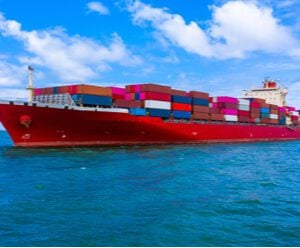
How can China maintain its global relevancy amidst diversification?

After relaxing its zero-COVID policies early in 2023, China’s reopening has injected fresh optimism into the global revival of trade. The country is on its way to recovery and poised to meet its 2023 growth target of around 5 percent—a substantial jump from 3 percent the previous year. Its all-too-important manufacturing activity is likewise back to pre-pandemic levels, following a dramatic drop in early 2020.
But can China maintain its position as a global manufacturing and economic powerhouse?
There are certainly risks. Rising tensions with the United States could disrupt global supply networks. The drawn-out property downturn and soft global demand also pose considerable challenges. However, the opportunities for import and export businesses are too significant to overlook, particularly in light of the recent rollout of favorable policies.
A catalyst for global trade growth
As the world’s largest manufacturing hub, accounting for roughly 30 percent of global output, China’s reopening has major implications for world trade and could boost global growth prospects. The sheer size of its economy and its role in global trade make it too important to ignore for any international business.
With the world’s most populous consumer base at 899 million people, China now contributes around 18 percent to global GDP. As the McKinsey Global Institute pointed out in a recent report, the country is emerging as a world leader in advanced technologies such as artificial intelligence, and is also one of the largest producers of renewable energy products. At the same time, it accounts for up to 40 percent of the global market in sectors such as luxury consumer goods and industrial machinery.
“Can companies in those sectors afford to miss out on the China market?” the McKinsey report’s authors ask. “Similarly, can companies that depend on supply chains in China or derive important contributions from R&D facilities there afford to leave?”
China’s global trade resilience
While China’s overall score in the DHL Global Connectedness Index dropped two points to 52 compared to the previous year’s report, its performance in international trade flows increased to 55. This helped China secure the fourth position out of 171 countries and territories in terms of the breadth of its global trade involvement.
Domestically, industrial output continues to recover, though growth has been uneven as manufacturers deal with high costs of raw materials and increased competition.
The manufacturing purchasing managers index (PMI) reached its highest level in more than a decade in February 2023 at 52.6. Most recently, the index expanded to 50.2 in September 2023 but declined to 49.5 the following month. A score above 50 signals growth, while anything below 50 indicates a decline.
‘China +X’ as a diversification strategy
China remains highly resilient and continues to exert substantial influence in both trade and manufacturing. Although there’s a perception that businesses are moving away from China due to rising tensions with the U.S. and other factors, DHL’s latest Global Connectedness Index noted that it is not as drastic as it looks.
Still, there is a small change in the flows related to trade, capital, information, and people between the U.S. and China. In 2016, for example, the U.S. share of flows to and from China was 9.3 percent, while now it is estimated at 7.3 percent. Similarly, China’s share of flows to and from the US decreased from 17.8 percent to 14.3 percent.
“What we observe is a ‘China +X’ strategy,” said Ken Lee, CEO, DHL Express Asia Pacific. “It means that companies are diversifying their manufacturing base or suppliers in Asia Pacific, on top of their focus on China which remains a key market for many companies.”
The recent expansion for the logistics firm’s Central Asia Hub in Hong Kong underscores the strong relationship between Asia Pacific and China.
Recovery measures fuel growth
A recent flurry of policies aimed at boosting economic recovery should support manufacturing and supply chain resilience.
In March 2023, China’s State Council extended tax benefits to support small businesses and key industries. These measures include tax deductions for research and development costs, and lower income tax rates for low-profit businesses and sole proprietors. This move is expected to reduce the annual tax and fee burden for eligible companies by more than RMB480 billion.
Policies for the real estate sector should also improve business and consumer confidence. These include easing eligibility criteria for first-home buyers and reducing interest rates on existing first-home mortgages. Thanks in part to these measures, the International Monetary Fund upgraded its forecast for China’s 2023 growth to 5.4 percent.
China will step up its international competitiveness, suggesting expanded opportunities for businesses. In a 2023 speech to senior government officials, President Xi Jinping emphasized the vital role of innovation and reform in advancing “Chinese-style modernization” to strengthen the country’s industrial system.
Xi stressed that ensuring economic security and safeguarding industrial and supply chains are key to “keeping the destiny of our country’s development and progress firmly in our own hands.”
Succeeding in the evolving Chinese market
China continues to present compelling opportunities for both export and import businesses. Beyond the market’s strong fundamentals and evolving policies, the nation benefits from regional trading partnerships, which make the movement of goods and supplies more efficient and cost-effective.
But as McKinsey Global Institute analysts highlighted, international businesses must reassess their China strategies and consider their options, from heavily investing in the country to diversifying. As they confront that choice, they should investigate two factors. First, what is at stake for them in China? Second, what will it take to derisk that stake?
These two questions define the importance of understanding China’s evolving role in global trade. “Businesses need to define their strategic approach to effectively navigate and thrive in this dynamic market,” added Lee.
ALSO WORTH READING















 English
English